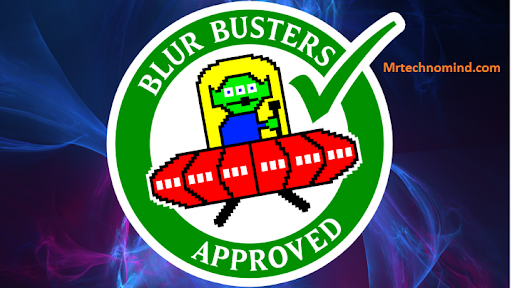What is Motion Blur Reduction and How Does It Work?

Motion blur reduction is an important part of modern digital photography. It helps reduce unwanted motion blur caused by camera shake, subject movement, and other factors.
This article will explain the basics of motion blur reduction and how it can be used to improve the quality of photos.
Motion blur reduction is a technique used to reduce unwanted blurring in photos caused by camera movement or subject movement. By using this technique, photographers can achieve sharper photos with more detail and clarity.
It also works to minimize the effects of low light, wind, and other external factors that may affect the sharpness of photos.
This article will explore how motion blur reduction works and how it can be used to create better images.
What is Motion Blur Reduction?
Motion blur reduction is a technique used to reduce the amount of blur in an image caused by camera or subject movement. It is often achieved through the use of faster shutter speeds, higher ISO settings, or some combination of both.
The result is that the picture appears sharper and more detailed than it would without motion blur reduction.
When it comes to reducing motion blur, shutter speed is key. The faster the shutter speed, the less time there is for any movement between shots, resulting in less blurring. However, increasing the shutter speed can also cause other issues such as increased noise and decreased depth of field.
ISO settings are also important when it comes to motion blur reduction. Higher ISO settings allow for shorter exposure times while still obtaining good results, but they can also introduce more noise into the image.
This means that finding a balance between ISO setting and shutter speed is essential in order to get good results with motion blur reduction. With careful adjustment of these two elements, motion blur can be minimized while still maintaining a good level of detail and clarity in an image.
To achieve optimal results when using motion blur reduction techniques, understanding how each element affects your image quality is essential. Knowing when and how to adjust each one will help create sharp images with minimal impact on overall detail and clarity.
When Should You Use Motion Blur Reduction?
Motion blur reduction is a feature that can be found in many modern TV sets, monitors, and gaming consoles. This feature is designed to help reduce the blurry effect of fast-moving images on the screen. It works by rapidly refreshing the image on the display, allowing for more clarity when viewing action movies or playing video games.
Motion blur reduction can be a great way to enjoy clearer visuals from your TV or gaming console. Generally speaking, motion blur reduction should be used whenever you’re watching something with lots of quick movements such as sports or action movies. Additionally, it can also come in handy when playing video games that involve fast-paced action.
Here are some situations where you might want to consider using motion blur reduction:
* When watching sports or action movies
* When playing fast-paced video games
* When working with graphic design applications that have lots of movement
* When editing videos with high frame rates
Motion blur reduction can really improve the clarity and sharpness of your visuals, making it easier to stay focused on what’s happening on the screen. However, it is important to note that this feature can also introduce input lag which could negatively impact response time speed if you’re trying to play a game competitively. With this in mind, it is important to weigh up the pros and cons before deciding whether motion blur reduction is right for your needs.
Response Time Speed
Response time speed is a very important factor when it comes to reducing motion blur in gaming monitors. It refers to how quickly a monitor can respond to changes in the image. Generally, the faster the response time, the less motion blur will be present on the screen.
A monitor with a response time of 5ms or lower is ideal for gaming and other activities that require fast, precise movements. To ensure that a monitor has an acceptable response time, it is important to look for one that has been tested and certified by Blur Busters Approved Certification.
Monitor manufacturers usually provide information about their product’s response times on their websites or product packaging. It is important to keep in mind that these numbers are often exaggerated and should be taken with a grain of salt. The only way to know for sure if a monitor has a good response time is to read reviews from real users who have tested it extensively. This will give you an unbiased opinion of how well the monitor performs in terms of motion blur reduction.
When shopping for a new gaming monitor, it’s essential to consider both its response time speed and its Blur Busters Approved Certification status. Doing so will ensure you get one that can provide smooth visuals without any noticeable motion blur during intense gaming sessions or other activities requiring quick movements.
With this knowledge, you’ll be able to make an informed decision on which monitor best suits your needs. Moving forward, we’ll discuss what having Blur Busters Approved Certification means for your gaming experience.
Blur Busters Approved Certification

Motion blur reduction is the process of reducing the amount of blurring caused by a moving object in an image. This can be achieved through a variety of methods, including increasing shutter speed, using higher refresh rate displays, and using specialized software designed to minimize blur in images.
Here are three key aspects to look for when choosing a motion blur reduction technology:
- Refresh rate – The higher the refresh rate, the less noticeable any motion blur will be.
- Motion detection – Look for technologies that detect motion and automatically adjust the frame rate to reduce blur.
- Quality settings – Ensure that your display has high-quality settings so you get the best possible image quality when reducing motion blur.
Ultimately, it’s important to find a motion blur reduction technology that meets your needs and provides you with clear and vivid images without any distortion or blurring effects.
With Blur Busters Approved Certification, consumers can trust they’re getting optimal performance from their displays while also having confidence that their hardware is optimized for maximum clarity and smoothness.
Blur Busters Approved 2.0

The sun rises, with its rays of light piercing through the sky. It’s a new day and a new opportunity to experience life in all its glory. But for some, the light brings not just joy, but pain – they are tormented by motion blur reduction.
Motion blur reduction is a technique used to reduce or eliminate motion blur when taking photos or shooting videos. In the modern world of high-speed technology, it has become increasingly important for professionals and hobbyists alike to capture crisp images with no blurs or ghosting effects.
Blur Busters Approved 2.0 is an advanced system that takes motion blur reduction to the next level, allowing users to take photos and shoot videos with minimal motion blur and maximum clarity. The Blur Busters Approved 2.0 system works by stabilizing movement and increasing shutter speed, resulting in sharper images and smoother video without any loss of quality.
This innovative system also reduces noise levels while capturing images or shooting videos, making it ideal for use in low-light conditions. With Blur Busters Approved 2.0, users can take clear pictures and videos even when there’s fast action happening around them – leaving them free to enjoy the moment without worrying about capturing blurry images or shaky footage.
Frequently Asked Questions
1. What Are the Benefits of Using Motion Blur Reduction?
Using motion blur reduction can have several benefits, especially for gamers.
It can help reduce eyestrain, by making images appear clearer and sharper.
Motion blur reduction also minimizes the amount of ghosting or smearing that may be present when playing games at higher speeds or with fast-moving objects.
Additionally, it can reduce input lag and improve response time, which can give gamers a competitive edge in online games.
2. How Does Motion Blur Reduction Work?
Have you ever noticed the blur that happens while watching an action-packed movie? That’s a motion blur! It’s caused by the movement of objects within a scene, and it can be quite distracting.
But what if there was a way to reduce this motion blur? Well, motion blur reduction technology works by detecting the rapid movement of an object in a scene and then rapidly backlight strobing the display at each of these moments to create sharper images with less blurring.
This technique is used in many modern TVs and gaming monitors to provide smoother visuals for fast-paced content.
3. Is Motion Blur Reduction Compatible With All Types of Displays?
Motion blur reduction is not necessarily compatible with all types of displays.
This is because each type of display has its own set of capabilities and requirements when it comes to motion blur reduction.
Some displays are able to support motion blur reduction, while others may not be able to do so.
It’s important to research the display you’re using before attempting to enable motion blur reduction as compatibility issues may arise.
4. Are There Any Trade-offs to Using Motion Blur Reduction?
Motion blur reduction can be a great way to sharpen up the action of your games, but it’s not without its drawbacks.
Turning motion blur reduction on is like turning on a spotlight; it makes everything seem brighter, but it also shines a light on the flaws of the display.
You may notice more artifacts or graininess if you have an older monitor, and you might even find that the refresh rate slows down.
It’s important to balance these trade-offs and decide whether motion blur reduction is worth it for you.
5. How Does the Response Time Speed Affect Motion Blur Reduction?
Response time is an important factor when it comes to motion blur reduction. Most monitors have a response time of 1-5ms, and the lower this number is, the better able the monitor will be to reduce motion blur.
However, too low of a response time can lead to ghosting or other artifacts that can make images look blurry. So it’s important to find a good balance between response time and motion blur reduction.
Conclusion
Motion blur reduction is an effective way to improve the visual clarity of fast-moving images. It works by reducing the amount of time that a pixel is lit up, which results in less blurring.
Overall, motion blur reduction can provide a more immersive experience when watching movies and playing games.
What’s more, research shows that motion blur reduction can increase user performance when playing video games. Studies have found that gamers experienced a 22% improvement in reaction time with motion blur reduction enabled on their monitors.
For those looking for a smoother gaming experience or just improved visuals in general, a motion blur reduction is an attractive option. However, it may not be compatible with all displays and there may be trade-offs such as increased response time speed.
Ultimately, it’s up to the user to decide if motion blur reduction is worth it or not.
